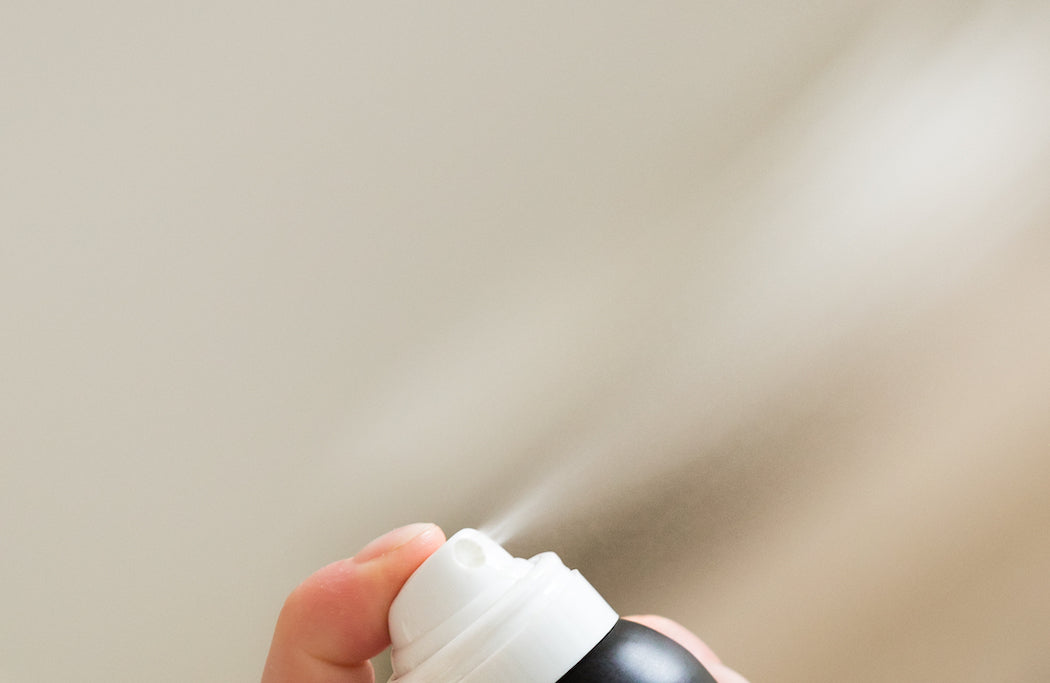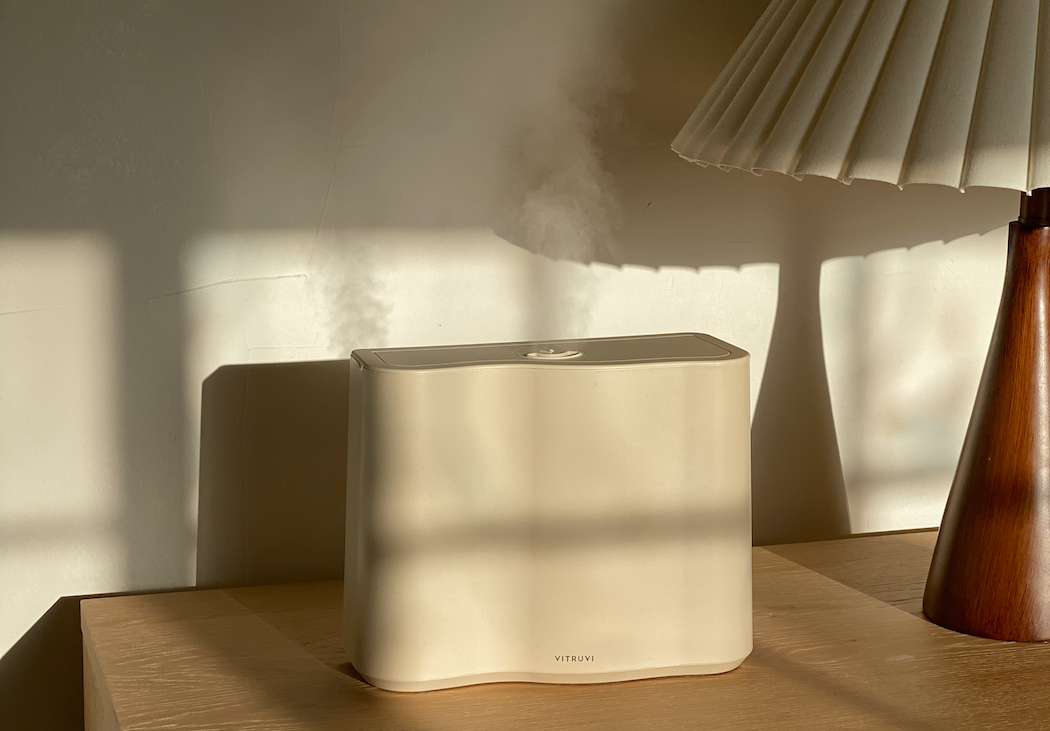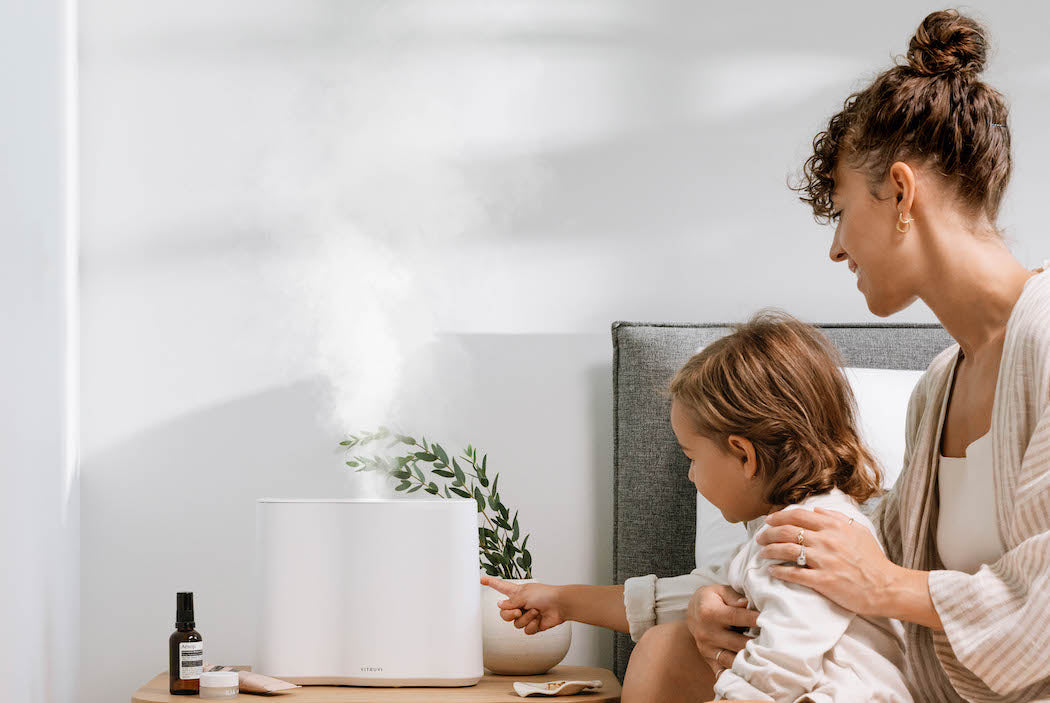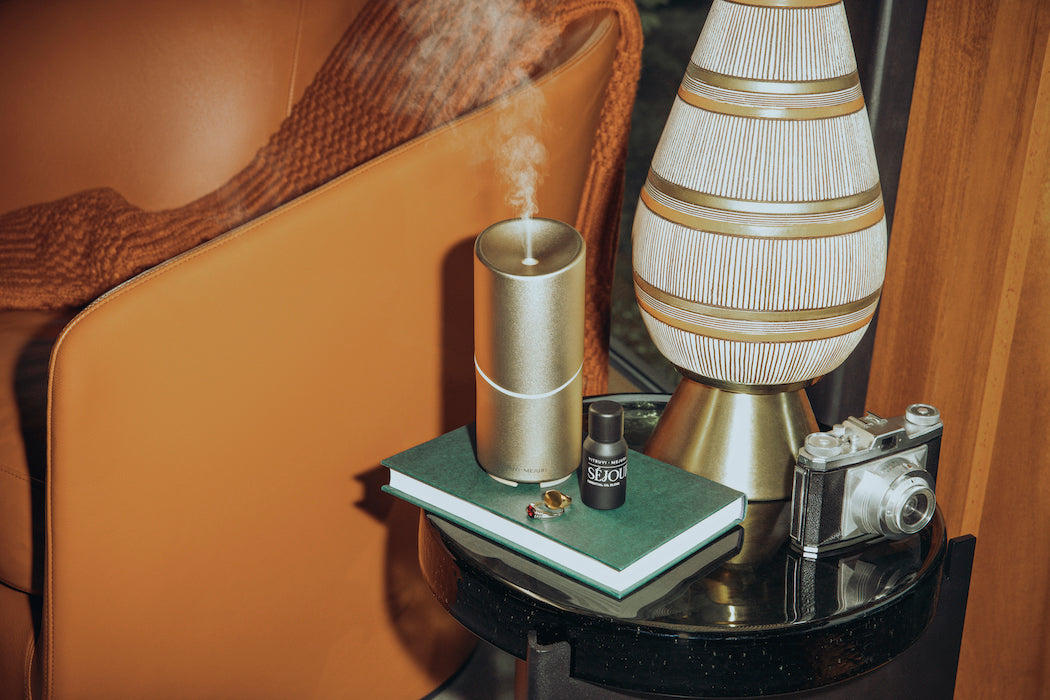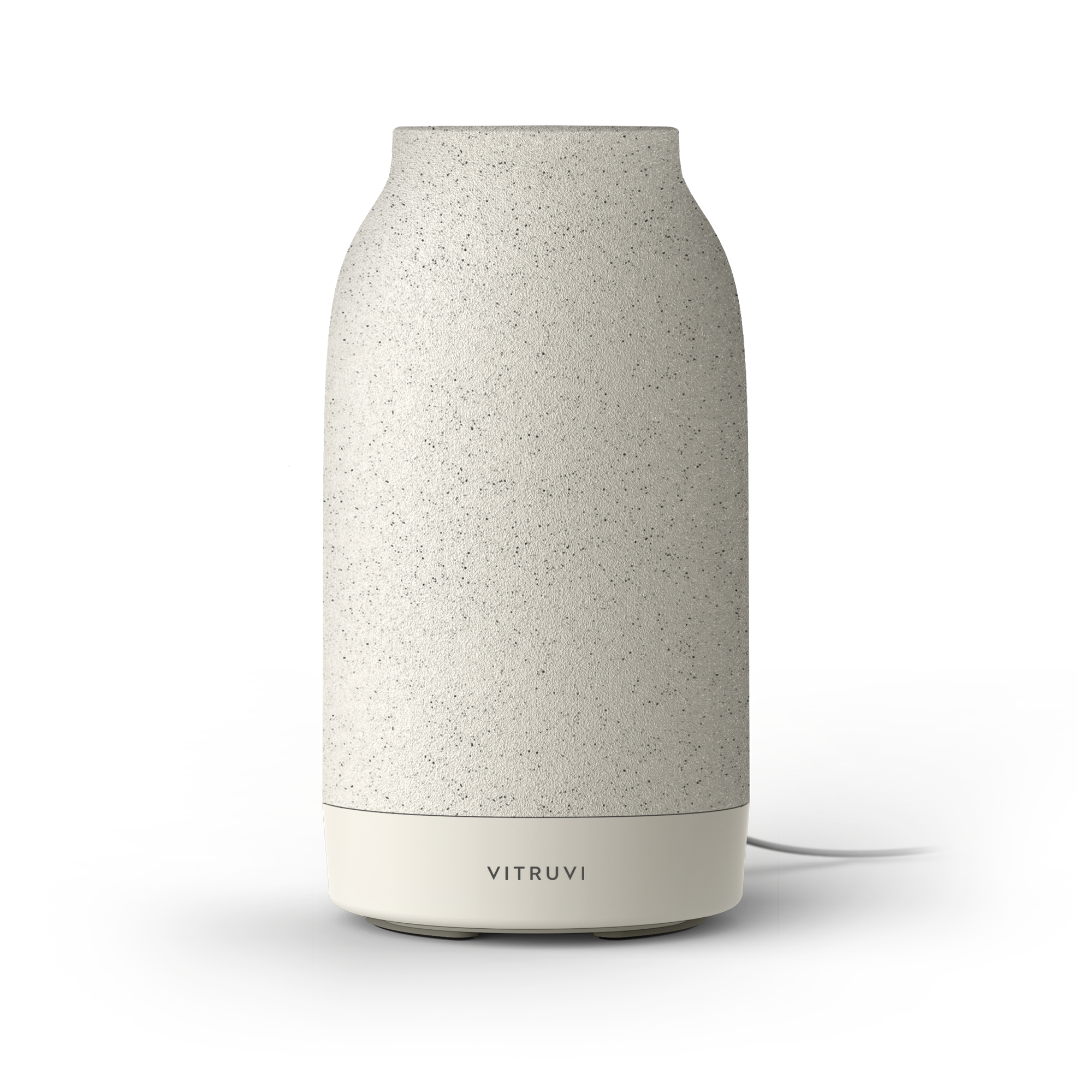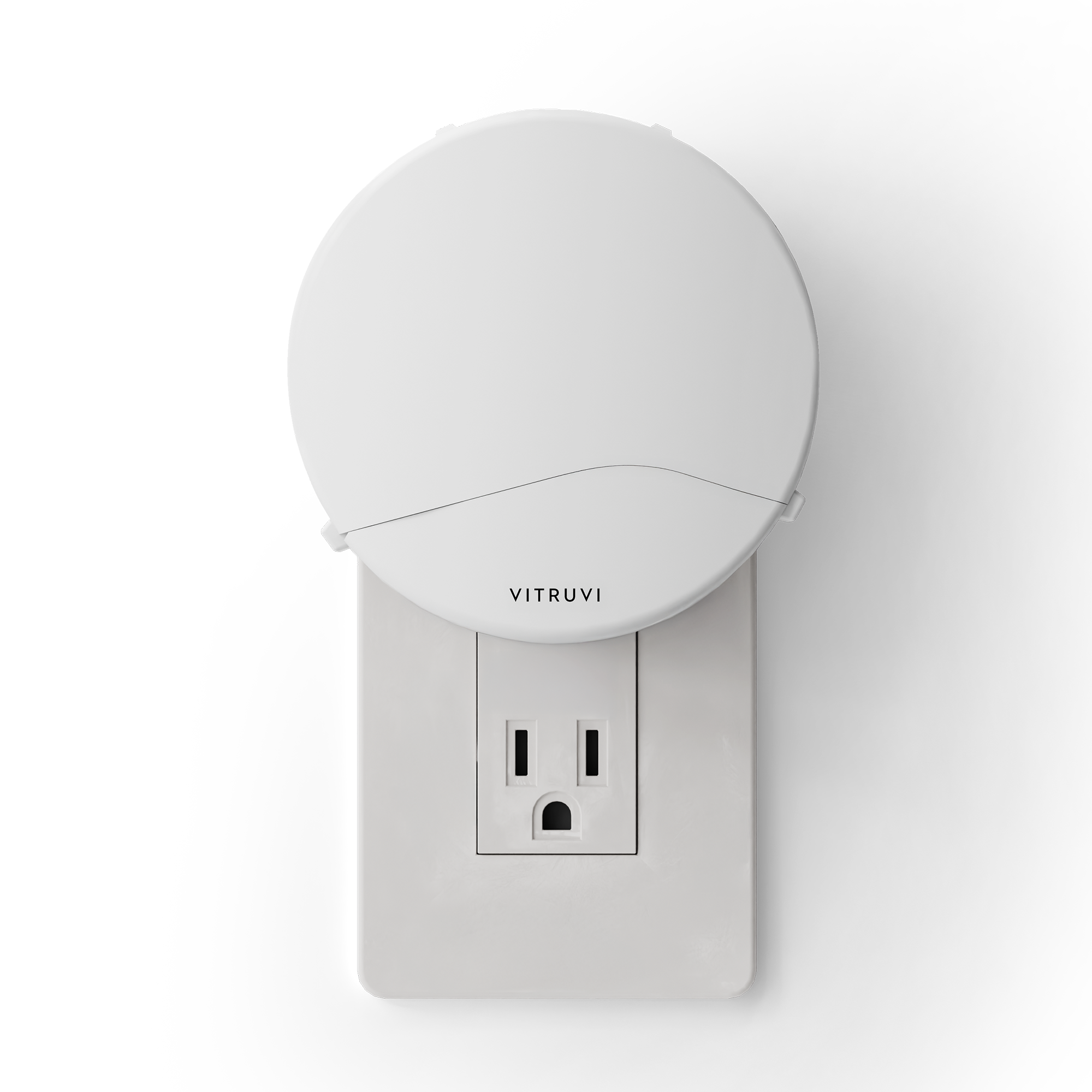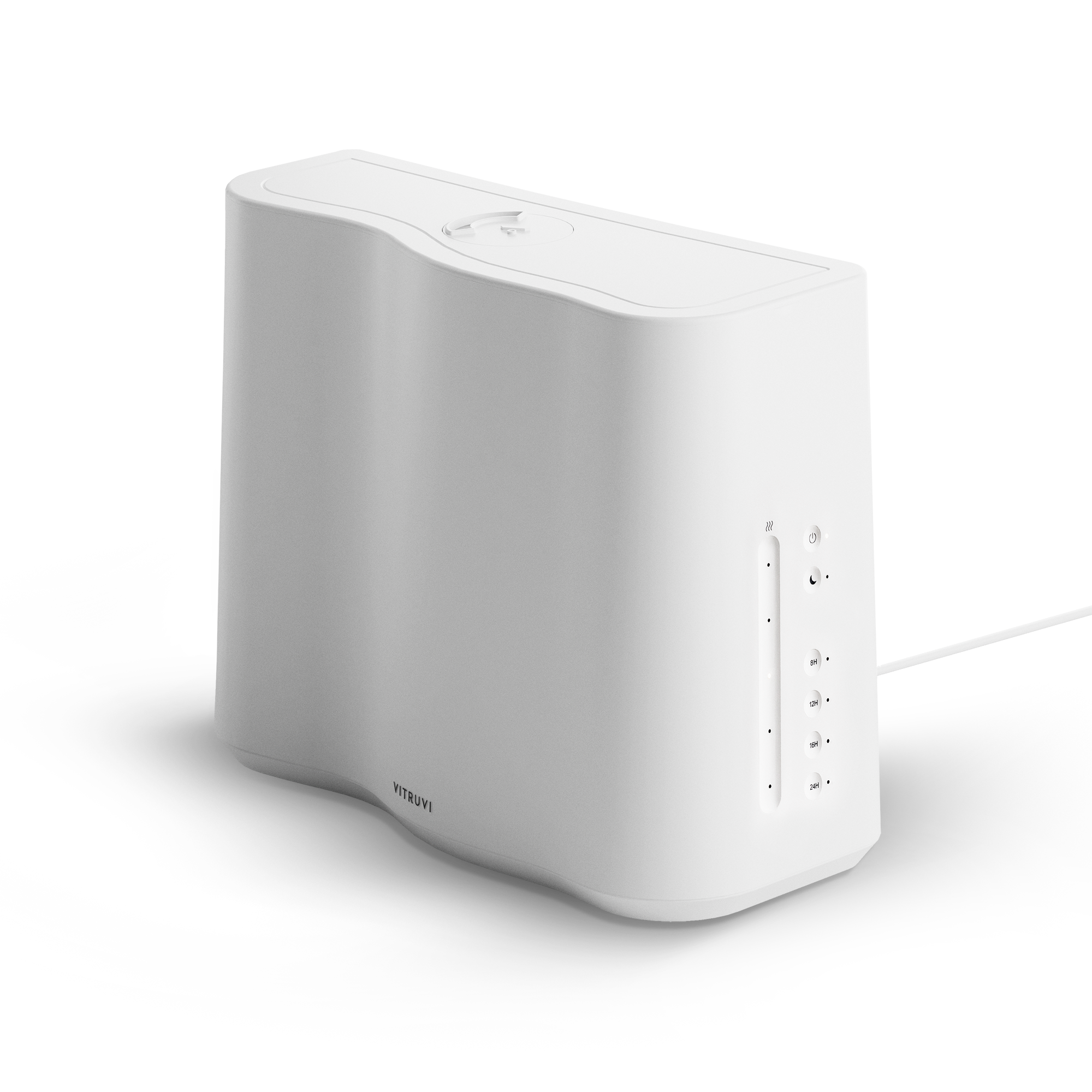As we continue to take stock of our lives, finding ways to be more mindful and more healthful, we can turn our attention to the air we breathe.
Even though we can’t see it, we know that it’s all around us—and we also know it’s vital to our health. But there can often be things lurking in our air that have no place in our homes or our bodies. Here are some potentially harmful ingredients that it could be good to avoid in your air care products.
Volatile organic compounds
Volatile organic compounds (VOCs) are gasses that are created from certain processes and products, and are emitted into the air both inside and outside our homes. In terms of household products, they are found in everything from paint and varnishes to aerosols and deodorants. Concentrations of VOCs are often higher indoors, which is why these are a common group of compounds to look out for in your products. When exposed to high levels of VOCs, some of the short-term health effects include headaches, eye and throat irritation, nausea, and dizziness; long-term effects can include central nervous system damage and cancer. An easy step for reducing your exposure is to make sure to air out your home often by opening windows and doors—especially when using products known to contain VOCs.
Phthalates
Phthalates are chemicals that are frequently found in many personal care products, from nail polishes and perfumes to detergents. They are used to make plastic more durable, and in some cases to help dissolve other ingredients in a formula. Because they are used in hundreds of products, there has been some concern over our exposure to them; however, at this time, the U.S. Food & Drug Administration has established that these chemicals do not have a risk to human health that requires regulation.
Parabens
Parabens are a group of chemicals frequently used as preservatives and antimicrobial agents in cosmetic, fragrance, and pesticide products. Health Canada is assessing the potential risks posed by parabens, while the U.S. Food & Drug Administration has, so far, concluded there are not any concerning effects of using parabens in cosmetics. If you’d like to avoid products with parabens in them, carefully read an ingredient list; names like methylparaben and ethylparaben are simple to spot.
Formaldehyde
Formaldehyde is a gas caused by natural occurrences such as forest fires, and is also found in household materials such as paint, particleboard, and lacquer, as well as some cosmetic and fabric products. It is a type of volatile organic compound that, when inhaled over long periods or in large quantities, can cause irritation to the eyes, nose, and throat; cause respiratory issues; and in rare cases, cause cancer. Canada and Europe have strict regulations in place to control the amount of formaldehyde allowed in personal care products.
Synthetic fragrances/perfumes
Synthetic fragrances are manufactured scents that are found in many household and personal care products to give them a particular aroma. They can often be volatile organic compounds, and can cause irritations such as asthma attacks, difficulty breathing, and migraines. Because it’s considered a proprietary formulaic secret, cosmetic and beauty brands are not required to list the specifics of their products’ synthetic fragrance—even though that one word can actually contain dozens of chemicals. To avoid them, read ingredient labels and ensure the words “fragrance” and “perfume” don’t appear on their lists.
Sulfates
Sulfates are chemicals that are added to many personal care products to make them foam and lather. Exposure to sulfates can result in short-term irritation of the skin, eyes, or lungs, but there are no proven long-term risks at this time.
Small particles/particulate matter
Particulate matter, also called particle pollution or small particles, is a group of chemicals found in our air in both solid and liquid form. While some particulate matter (such as smog or smoke) can be seen to the naked eye, most of it is microscopic; the smallest particles are 30 times finer than an average strand of human hair. And because they are so small, they can be inhaled and cause damage to our health—particularly to our heart and deep into our lungs. Some health effects include coughing, difficulty breathing, and an irregular heartbeat. The United States Environmental Protection Agency has regulations in place to control the creation of emissions that produce particulate matter at the national and regional levels.
Synthetic propellants
Propellants are compounds that, when under pressure, push a liquid solution up a can and out through a valve, creating a foam or spray (think: hair sprays and foaming kitchen cleaners). Propellants are often volatile organic compounds, can be highly flammable, and can contribute to global warming. When possible, opt for products with natural and low-global-warming-potential propellants, which are believed to be better for you and for the environment.
Caring for your air and your home can feel daunting, but it doesn’t have to. The trick is to be aware of what’s in your products and to take action where you can. Only you can decide what’s right for you.

